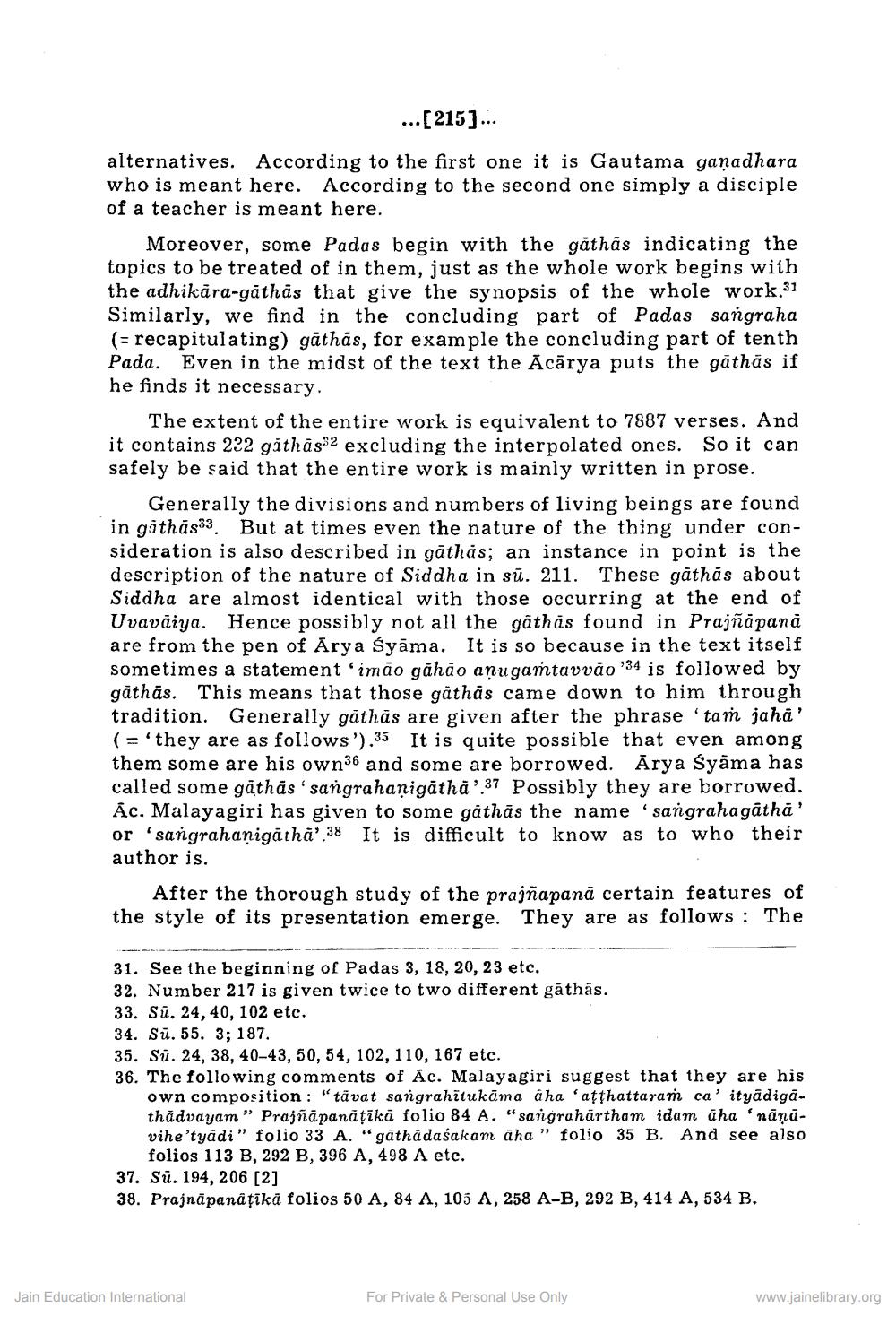________________
...[215]...
alternatives. According to the first one it is Gautama gaṇadhara who is meant here. According to the second one simply a disciple of a teacher is meant here.
Moreover, some Padas begin with the gathās indicating the topics to be treated of in them, just as the whole work begins with the adhikara-gāthās that give the synopsis of the whole work.31 Similarly, we find in the concluding part of Padas sangraha (= recapitulating) gāthās, for example the concluding part of tenth Pada. Even in the midst of the text the Acarya puts the gathās if he finds it necessary.
The extent of the entire work is equivalent to 7887 verses. And it contains 222 gathas 2 excluding the interpolated ones. So it can safely be said that the entire work is mainly written in prose.
Generally the divisions and numbers of living beings are found in gathās. But at times even the nature of the thing under consideration is also described in gāthās; an instance in point is the description of the nature of Siddha in su. 211. These gāthās about Siddha are almost identical with those occurring at the end of Uvavaiya. Hence possibly not all the gathas found in Prajñāpanā are from the pen of Arya Syama. It is so because in the text itself sometimes a statement 'imão gāhão anugaṁtavvão '34 is followed by gāthās. This means that those gathās came down to him through tradition. Generally gathās are given after the phrase 'taṁ jahā' (= 'they are as follows').35 It is quite possible that even among them some are his own36 and some are borrowed. Arya Syama has called some gathās 'sangrahaṇigäthä'.37 Possibly they are borrowed. Ac. Malayagiri has given to some gathas the name 'sangrahagāthā' or 'sangrahanigatha'.38 It is difficult to know as to who their author is.
After the thorough study of the prajñapană certain features of the style of its presentation emerge. They are as follows: The
31. See the beginning of Padas 3, 18, 20, 23 etc.
32. Number 217 is given twice to two different gāthās.
33. Su. 24, 40, 102 etc.
34. Su. 55. 3; 187.
35. Su. 24, 38, 40-43, 50, 54, 102, 110, 167 etc.
36. The following comments of Ac. Malayagiri suggest that they are his own composition: "tavat sangrahitukāma aha 'aṭṭhattaram ca' ityādigāthādvayam" Prajñāpanāṭīkā folio 84 A. "sangrahārtham idam āha 'nāṇāvihe 'tyadi" folio 33 A. "gäthädasakam aha" folio 35 B. And see also folios 113 B, 292 B, 396 A, 498 A etc.
37. Su. 194, 206 [2]
38. Prajnāpanāṭīkā folios 50 A, 84 A, 105 A, 258 A-B, 292 B, 414 A, 534 B.
Jain Education International
For Private & Personal Use Only
www.jainelibrary.org




